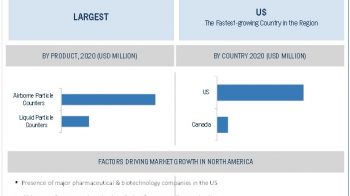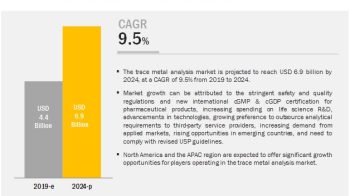Lab automation is defined as the use of technology to streamline or substitute manual manipulation of equipment and processes. The degree of automation that any lab requires depends on its workflow. While an academic research lab may prefer to use only some instruments in order to increase productivity and reduce the time spent on a tedious task, a drug discovery unit in a pharmaceutical company will perhaps need to automate all of its research phases.
What the global Lab Automation Market Looks Like?
The global lab automation market is expected to reach USD 5.20 billion by 2022 from USD 4.06 billion in 2017, at a CAGR of 5.1%. Factors such as process miniaturization, high demand for lab automation equipment in drug discovery and clinical diagnostics, higher reproducibility and accuracy, and large workforce demand and supply gap are likely to drive the growth of this market. In addition, lab automation offers enhanced productivity and reduced costs, better personnel safety, and small volumes of samples and reagents. However, high cost is limiting the adoption of lab automation among small and medium-sized labs which is likely to restrict the market growth.
Segmentation Of Global Lab Automation Market:
In this report, the market is segmented on the basis of equipment and software, application, end user, and region. On the basis of equipment and software, the lab automation market is segmented into automated workstations, off-the-shelf workcells, robotic systems, automated storage and retrieval system, software, and other equipment. The software segment is projected to grow at the fastest rate owing to the rising need for efficient data storage, analysis, and sharing methods.
Based on application, the market is segmented into drug discovery, clinical diagnostics, genomics solutions, proteomics solutions, microbiology, and other applications. The drug discovery segment is expected dominate the market in 2017. Lab automation eliminates human errors involved in drug discovery and reduces the time-to-market for drugs, thus driving its higher uptake in drug discovery. It also eliminates the need for many manual operations and makes it viable to work with minute volumes of samples and reagents.
Based on end user, the lab automation market is segmented into biotechnology & pharmaceutical companies, hospitals and diagnostic labs, and research & institutes. The biotechnology & pharmaceutical companies segment is estimated to grow at the highest CAGR during the forecast period. Factors such as increasing product intricacy, pricing pressure, high cost incurred by errors, and need for consistency in quality are driving biotechnology and pharmaceutical companies to adopt automation and accelerate the drug discovery process.
Download PDF Brochure:
https://www.marketsandmarkets.com/pdfdownloadNew.asp?id=1158
Geographic Analysis Of Global Market:
Geographically, North America is expected to command the largest share of the global lab automation market in 2017. The increasing adoption of lab automation systems, implementation of the Affordable Care Act (ACA) in 2010 and economy stimulus programs such as increased funds for the National Institutes of Health (NIH) and the National Science Foundation (NSF), and increased R&D activities by biotechnology and pharmaceutical companies are driving growth in the lab automation market in North America. On the other hand, the APAC region is expected to register the highest CAGR during the forecast period. A growing economy, increasing healthcare investments which lead to increased research activities and adoption of automated systems in clinical diagnostics and drug discovery, large population pool, improving public health awareness, and the rising demand for standardization and accreditation in laboratory practices are key market drivers in Asia Pacific.
Read more: https://www.marketsandmarkets.com/Market-Reports/lab-automation-market-1158.html

